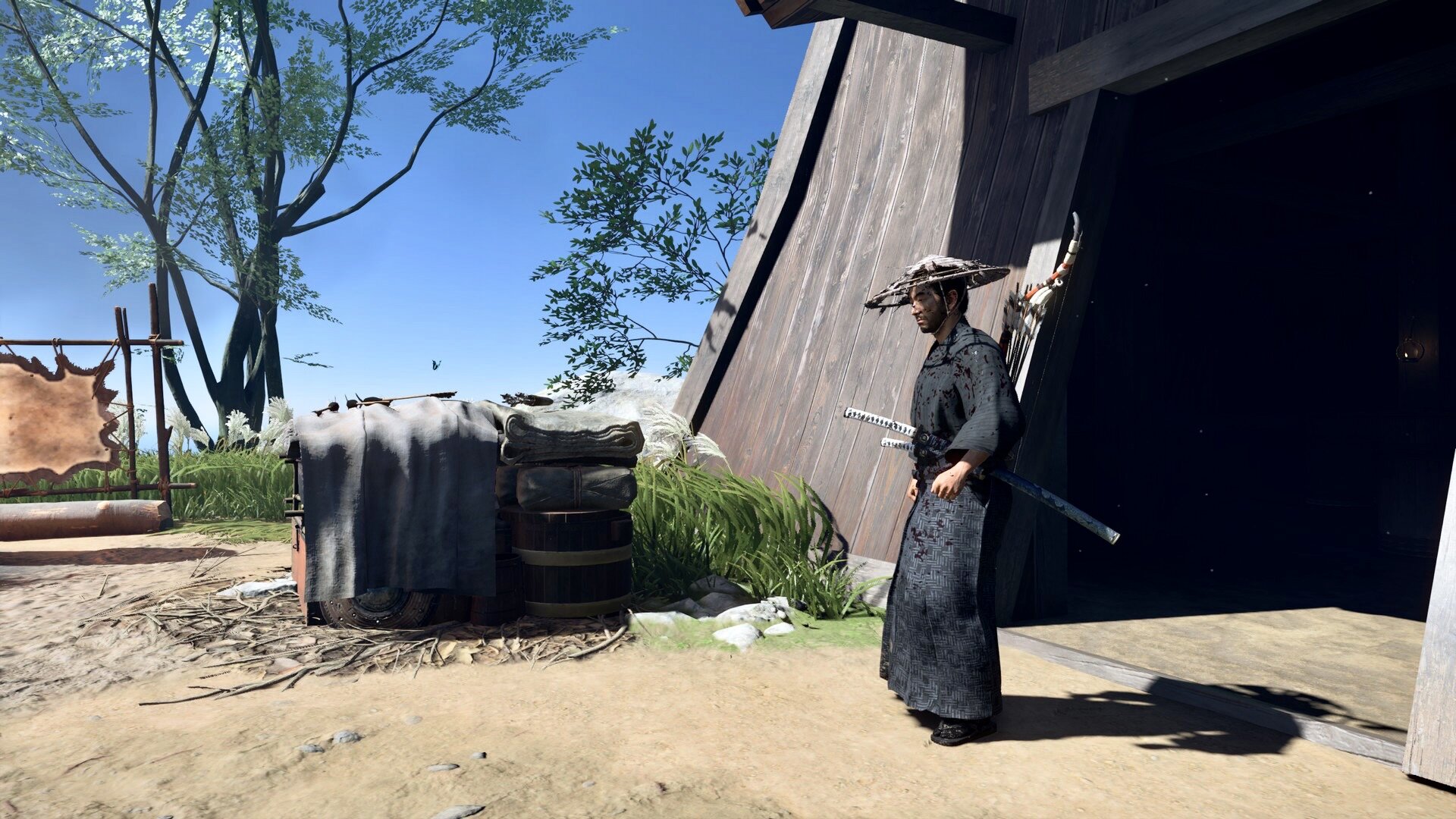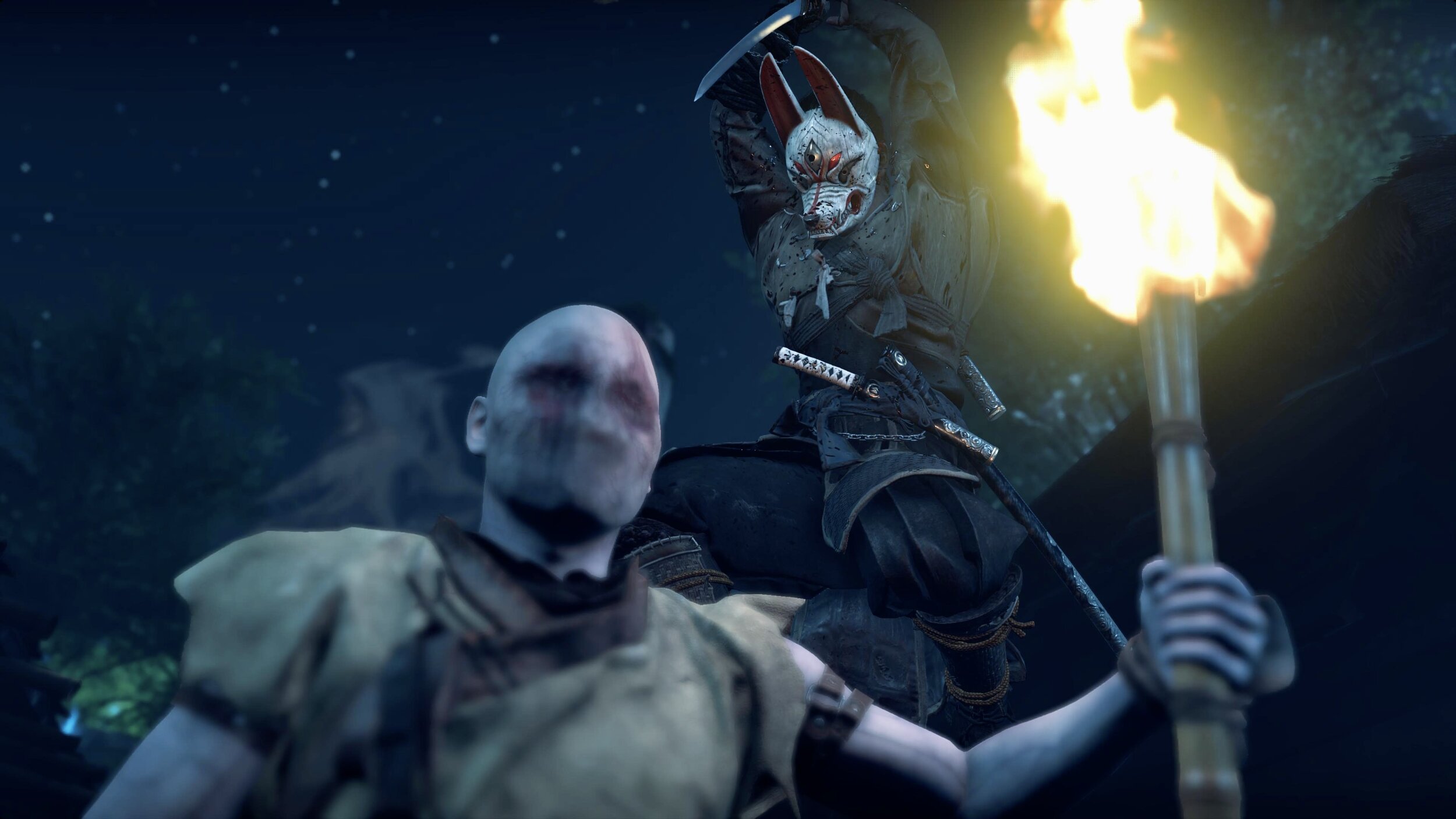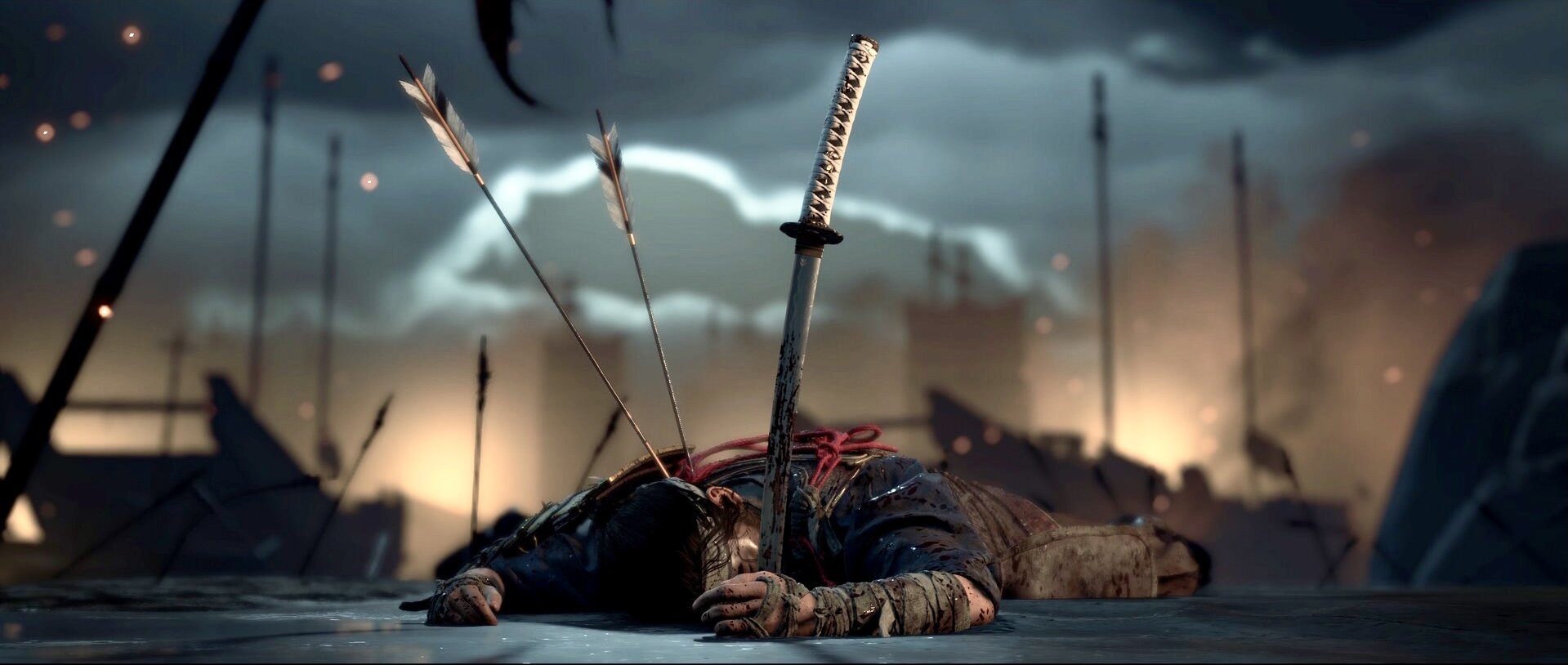Ghost of Tsushima
Thank you for reading our written review of The Ghost of Tsushima! Below we will cover:
Story
Gameplay
Cinematic Experience & Camera Mode
Creative Design
Conclusion & Rating
Click the button below if you would like to list to our full breakdown via podcast.
The STory
The setting and story are based on historical events but takes creative liberties by deviating with fictional characters and the details around how the Mongol invasion of Japan in 1274 actually concluded. You play as Jin Sakai, a samurai born into Clan Sakai. Jin's journey is one of immense turbulence as he faces a grueling struggle throughout the game on two fronts.
Externally, Jin is fighting to protect the people and way of life on the island of Tsushima during the Mongol invasion. Jin's adventure has you exploring a massive island full of Japan's beautiful landscapes and terrain. Fighting the Mongols and taking back strongholds is a powerful and overarching theme, but you'll encounter a more intimate and rewarding experience freeing smaller villages and towns from the Mongol savagery. As more of the island becomes liberated, Jin's notoriety improves, and you become the people's hero, which is a satisfying feature of the game experience.
Internally, Jin faces continual deep-seated conflicts that will challenge each player's personal philosophy on resolving complicated issues in times of great distress. It turns out staying true to the samurai's ethical code and traditional values while also defeating the Mongols are often at odds. Will you remain true to honor, possibly becoming a slave to it, or will you violate your values and everything you stand for to save your people?
The story in Ghost of Tsushima is more relevant to our lives than we may first think, which increases the power of the experience whether we are conscious of it or not. Intricately woven into Jin's story are also lessons on leadership as you become aware of your decisions' ripple effects on those who are following you. Storytelling is an integral part of life and communication, and the team at Sucker Punch provided one which many gamers will never forget.
Gameplay
I was surprised by how well the overall gameplay mechanics felt both in optionality of content and the fighting. Ghost offers a little bit of everything with no shortage of things to do. From a vast open world on the island of Tsushima to upgradable weapon and armor sets, you'll have the ability to spend copious amounts of time on a range of activities. One feature wildly popular among us at Busch League was the different customization of clothing and weapons. We can't get enough of in-game customization so that aspect adds to the overall freedom the game provides visually. Other great features are the secrets and collectibles, a mechanic that will surely trigger the 100% completionist gamer into dropping everything he or she is doing to scratch that itch. It took a few hours until I fully understood the overall game structure of how to unlock and complete quests. While learning curves can often be a negative, here it spoke to the amount of content and never once left me feeling overwhelmed. When it came to fighting, I was initially reminded of Assassins Creed. While there are similarities, Ghost offers additional functionality in the number of weapon types, multiple fighting stances, and mechanic movements such as dodging. When successfully dodging you'll notice that time slows, setting Jin up for an offensive attack. When performed correctly, I felt both the challenge of the mechanic and the reward of slaying the enemy in front of me.
Cinematic Experience & Camera Mode
The opening scene of Ghost immerses you into a cinematic experience akin to watching the end of Braveheart for the first time when they charge into battle. While many games have cinematic sequences, I found myself on the edge of my seat during most of Jin's journey and believe this experience magnified many other aspects of the game. On the full breakdown of Ghost on our podcast, we discuss Sucker Punch's incredible execution of camera mode. In general, camera mode will be looked back upon as a no-brainer that should have been integrated into gaming much sooner for two significant reasons. The first being a lower-cost guerrilla-like marketing and the network effects of sharing your experience via screenshots and videos. The second is the community strengthening and engagement around that sharing, which also reinforces the former. A publisher can spend a million dollars and beyond on marketing, or they can create a camera mode and empower their fans to capture that experience and share it amongst the gaming community instead. This network effect, and community tightening, is massively powerful. Freezing the game at any moment, moving the camera as you see fit, and even adding unique filters and content on top of that screenshot was grandmaster level integration. I spent hours in camera mode, took over 300 screenshots and 20 videos, and still cannot get enough of this feature.
Creative Design
I left creative design for last because it resonated with me most. Every detail of this game was designed with minimalism in mind paralleling the traditional Japanese and samurai culture. From all of the game's menus, to replacing the standard GPS compass with nothing but directional wind, the UI/UX in Ghost is second to none. The design philosophy of decluttering the screen so that the core game mechanics and cinematic story experience are most prominent was rewarding. While counterintuitive in many respects, less is more, and that couldn't be more true in a time where our brains are overloaded with in-game map markers, clunky menus, ads, and pop-ups. Ghost carries this philosophy and design through the entire game, which I found to be a refreshing break from other games and everyday platforms that don't take this approach. I would argue that this may be subconscious to most, but that in itself validates success in the delivery, enhances your experience, and plugs you deeper into the moment while removing distractions.
Conclusion & Rating
One con worth mentioning was the repetitive feeling of clearing out towns and taking back strongholds. While Ghost offers rewarding scenes after and a visual change to your actions, such as a fully functioning farm with happy workers, the redundancy can be a turn off. While no game is perfect and each has room for improvement, our conclusion was one of great appreciation and in line with that feeling we gave Ghost of Tsushima a legendary 10 out of 10. The takeaway I was left with was an experience unique to recent gaming titles and a deeply emotional narrative around the characters and the struggles they faced amidst a horrific historical event. We couldn't speak highly enough of Ghost of Tsushima and internally, won our game of the year amongst the Busch League team. We believe if you love storytelling, history, creative open world experiences and the genre, you will thoroughly enjoy this title.
Buy this game if you enjoy:
Assassin’s Creed
Open World RPGs
Storytelling







